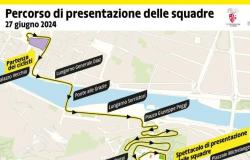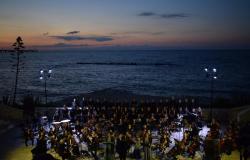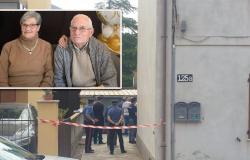VENICE – From the Belle époque to the advent of fascism, evoked by a gathering of black shirts in Piazza San Marco to celebrate the second anniversary of the March on Rome. A journey lasting a quarter of a century, among decadent atmospheres imbued with poignant memories, of a beloved but now distant Venice, which lives in the objects purchased from antique dealers and second-hand dealers and brought to the Parisian house of Henri de Régnier. The French writer and poet is the author of “The Altana” (De Bastiani publisher, translated by Bruno Longo), a novel – but the definition is improper – is now published in Italian, which returns the testimony of a disappeared Venice and the characters who populated it.
BLACK AND WHITE
Having arrived in the city for the first time in 1899, as a guest of Countess Baume-Pluvinel at Ca’ Dario, the author recounts his encounter with Venice, from the nightly arrival by gondola in the historic residence to the daily walks to discover the city. From the pages emerges a black and white image of the lagoon Belle époque, with its rituals – the cannon shots fired at midday from San Giorgio Maggiore or the appointment “under the Chinese”, an oriental portrait inside the Florian café – and its protagonists.
The vision of Régnier, a frequenter of Mallarmé in Paris and a follower of symbolism, is aristocratic: the city he describes is made up of poor people, boatmen selling strawberries and beggars. In one passage the author tells of an excursion to Torcello by gondola, preferred to the vaporetto which with the noise of its propellers ruins the silent atmosphere of the lagoon.
The decadent climate recalls the setting of Luchino Visconti’s “Death in Venice”. But this Venice ends up bewitching the Parisian man of letters who will return to Venice on a regular basis, punctuated by the chapters of the book in which the transformations of the city are captured. At the time, to give an example, the Accademia bridge was an iron structure (also despised by the author), and the bell tower of San Marco, after the silent collapse of July 1902, made Piazza San Marco an open construction site , at least until 1912 when the “paron de casa” returned “where it was and as it was”, a formula borrowed a century later for the reconstruction of the La Fenice Theatre.
PLACES
But the story also provides a map of the city of the early twentieth century, with accurate descriptions of palaces (from the home of Countess Baume-Pluvinel to the nearby Casa Zuliani, where de Régnier moved to the noblewoman upon his death, from Palazzo Vendramin ai Carmini to Palazzo Carminati a San Stae. With some excursions on the mainland, to Stra to be precise (then “a village of run-down houses”) where the author naturally arrives by boat, even if the existence of the tramway that led from Fusina to Padua is noted in the pages Moreover, the Parisian guest does not lack time who indulges in long excursions to the Lido, where seaside tourism is making its way, or to the Eden garden on the Giudecca, now managed by the Hundertwasser Foundation. Régnier’s itineraries are often solitary: in the chapters his wife Marie de Hérédia, also a writer under the pseudonym Gérard d’Houville, is never mentioned, but his social life is particularly intense, between a coffee at the Florian and a lunch at the Vida.
THE MEETINGS
The author knows Mariano Fortuny (who collects precious fabrics in his Palazzo di San Beneto), the historian Pompeo Molmenti and Gabriele D’Annunzio, hosted at Prince Hohenlohe’s Little Red House of San Vidal. Régnier saw it several times, from the roof terrace of Ca’ Dario, an observation point that dominates the city and where, one evening in 1915, with the guardian of the palace, he witnessed live an Austrian bombing of Venice. The war sent the Belle époque into retirement and the diary reports the destruction of the roof of the church of Santa Maria Formosa and of a fresco by Tiepolo degli Scalzi, the saving of the works of art, with Titian’s Assumption transported away by boat up to Padua to keep it safe. Parisian friends continually inform each other of the war wounds suffered by Venice, testifying to the French elite’s bond with the city. But life goes on, the city recovers and discovers the seaside tourism of the Lido. “A crowd of bathers, in very skimpy costumes, is busy roasting their limbs and bodies on the sand”, says Régnier with a touch of detachment, rather skeptical about the new direction taken by the city. In the last pages he describes without going into comments the parade of 28 October 1924 for the anniversary of the March on Rome, the parade of the black shirts with the speech of the authorities and the fateful cannon shot from San Giorgio. Then, of Venice, only the memory will remain in the objects brought to Paris and crammed into a house that still speaks of the love for the city built on water.
© ALL RIGHTS RESERVED
Read the full article at
The Gazzettino





